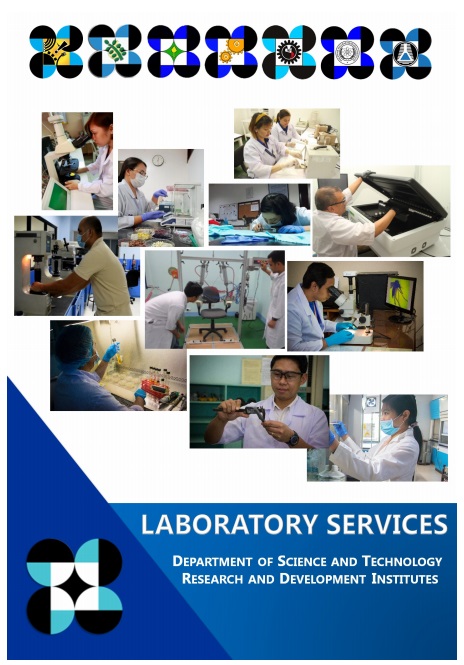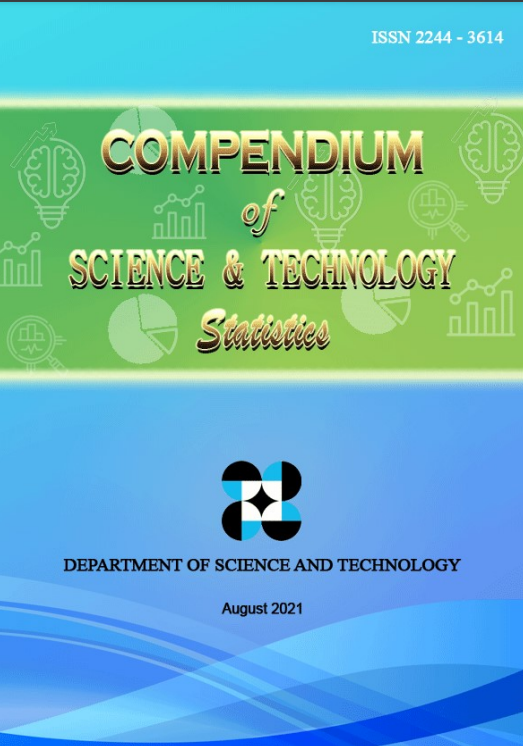Protect your creations, DOST tells inventors
- Details
- Hits: 5121
Aside from encouraging Eastern Visayan inventors to get creative through inventions and innovations, the Department of Science and Technology (DOST) Region 8 underscored the importance of protecting their creations through intellectual property rights.
“Protect your products first before you sell them,” advised Dr. Edgar Garcia, DOST’s Technology Application and Promotion Institute director, to inventors and student researchers who participated in the first ever Regional Invention Contest and Exhibits (RICE) at the Robinson’s Place in Tacloban City August 22-25.
Protecting inventions, said Garcia, means applying for patent or intellectual property right of an inventor’s creation or product. Securing a patent protects the inventor from duplication of the product and entitles him or her royalties when the product is sold or commercialized.
The RICE 8 has the theme “Imbensyon at Inobasyon: Kabalikat sa Pag-unlad.” Twenty-two entries from local inventors and students vie it out for the Outstanding Invention or Tuklas Award; Outstanding Utility Model or Likha Award; and Outstanding Student Creative Research or Sibol Award for high school and college students. Prototypes and researches, open for viewing at the venue, will be presented formally by their respective inventors on Aug. 24 at the Stefanie Smokehouse (across Robinson’s Place). Awarding ceremonies will be on Aug. 25 at Robinson’s Place.
To further encourage students to develop their creativity and ingenuity, DOST 8 will also hold a Patent Drafting Training-Workshop Aug. 23-25 at the EVSU Graduate School Function Room.
“Inventions and innovations are marks of a country’s competitiveness,” Garcia said. “This can be gauged through the number of patent applications filed.”
A high level of competitiveness beckons investment and development, driving a country towards progress.
“If you find a market for your product, DOST-TAPI will support you,” Garcia said, encouraging the participating inventors and students to apply for patent through TAPI.

Dir. Edgar Garcia of DOST-Technology Application and Promotion Institute with Ms. Bernardita Valenzuela, representative of Tacloban City Councilor Cristina Gonzales Romualdez, cut the ceremonial ribbon to open the exhibit at the DOST’s Regional Invention Contest and Exhibit at the Robinson’s Place in Tacloban City August 22-25. With them are DOST Region 8 Director Edgar Esperancilla (rightmost) and Intellectual Property Office Director General Allan Gepty (leftmost). (Framelia V. Anonas, S&T Media Service)
DOST steps up fight vs dengue, sets mosquito trap in NCR classrooms
- Details
- Hits: 3713
In an intensified campaign to fight dengue, the Department of Science and Technology, with the Department of Education (DepEd), will provide mosquito traps to all classrooms of both public and private schools in areas with high dengue cases in the metro.
“The DOST and DepEd partnership to stop dengue among our schoolchildren will start at the National Capital Region and will proceed to the regions most affected with the disease,” DOST Sec. Mario Montejo announced. “Our priorities will be schools in hotspot areas, communities around the schools, and hotspot barangays.”
Some 34,910 OL trap kits will be distributed to 17,454 classrooms in public and private elementary and secondary schools in Caloocan, Quezon City, Pasay, Valenzuela, Manila, Muntinlupa, and Pasig.
Within the month, DOST and DepEd will extend distribution to schools in Ilocos Sur, Benguet, La Union, and Pangasinan provinces where about 46, 500 OL Trap kits will be distributed in these areas for free.
Meanwhile, DepEd Undersecretary Rizalino Rivera, in a memorandum, instructed NCR school division superintendents to distribute the OL Traps to all schools in their respective divisions and assign students to monitor the traps.
The DOST-developed OL Trap has three important parts: a black container, a small strip of wood (lawanit) for mosquitoes to lay their eggs on, and a larvicide solution. The scent of the larvicide solution attracts female mosquitoes and encourages them to lay eggs on the immersed lawanit strip. Once exposed to the solution, the eggs and hatched larvae will die. The OL Trap prevents the next generation of mosquitoes from reaching adulthood and curbs the Aedes Aegypti mosquito population.
The OL Trap is one of the government’s strategies in its multi-pronged approach to fight the dengue menace.
DOST’s OL Trap sites show decrease in dengue cases
- Details
- Hits: 5820
Initial results from various regions revealed decrease in dengue cases after using the Mosquito Ovicidal Larvicidal (OL) Trap, data from the Department of Science and Technology show.
In Region 2, for example, five schools in Ballesteros and Claveria towns in Cagayan reported “zero case” as of press time, namely the Libag Elementary School, North Central School, Caritan Elementary School, Cataggamman National High School, and University of Cagayan Valley.
Official reports showed that in 2010, there were 210 aggregate cases of dengue among schoolchildren in four barangays where these schools were located. After the OL Trap rollout in these barangays, no cases have been reported thus far.
Ballesteros and Claveria were declared “hotspots” for dengue cases last year, with the former having 213 cases and the latter, 15 cases. To date, there have been no dengue cases reported since the roll out.
With the decrease in dengue cases reported in the region, Dr. Labasan, municipal health officer of Solano, Nueva Vizcaya said that additional units are needed for other barangays as they found that mosquito eggs and larvae are “killed right there and then.”
“It is the only way to stop the eggs from hatching,” he added.
In the Eastern Visayas where the OL Trap was initially launched, results showed that five barangays in Northern Samar, Southern Leyte, and Leyte showed zero results after the OL Trap was used in said areas. Brgy. Dalakit in Catarman, for example, had 44 cases last year while Brgy Airport had 30 cases. Meanwhile, Brgy 109-A in Leyte had 64 cases last year. Its neighbor, Brgy 109, also showed significant result having decreased its dengue cases from 122 last year to three this year.
Read more: DOST’s OL Trap sites show decrease in dengue cases
PNoy confers Order of the Golden Heart to del Mundo, National Scientist
- Details
- Hits: 4985

President Benigno Aquino III conferred the Order of the Golden Heart, Rank of Grand Collar (Marangal na Kuwintas) posthumously to Dr. Fe del Mundo during the necrological service held in del Mundo’s honor at the Department of Science and Technology in Bicutan, Taguig City, Metro Manila on 11 August 2011.
The Grand Dame of Philippine Medicine and the first female National Scientist, the 99-year old del Mundo died August 6 after a long and distinguished career.
In his eulogy, Pres. Aquino specially recognized Del Mundo’s significant contribution to the Philippine society, “even without holding a position in the government or being a successful entrepreneur” (Pinatunayan niyang hindi kailangang magkatunkulan sa gobyerno, o maging matagumpay na negosyante upang maka-ambag sa pag-unlad ng bansa.)
Pres. Aquino also noted that del Mundo “did not desire to be wealthy or powerful; she only focused her efforts on the health and sake of the children and the Filipino family.” (Hindi niya hinangad na magpakayaman at kumapit sa kapangyarihan, tanging ang kapakanan at kalusugan ng mga bata at pamilyang Pilipino ang kanyang tinutukan.)
Meanwhile DOST Secretary Mario Montejo noted that del Mundo’s stellar reputation and her various academic and professional recognitions were “overshadowed by her passion and quiet dignity.”
“Even in death, she continues to live in the hearts of those whose lives she touched warmly,” Montejo said.
Read more: PNoy confers Order of the Golden Heart to del Mundo, National Scientist










































